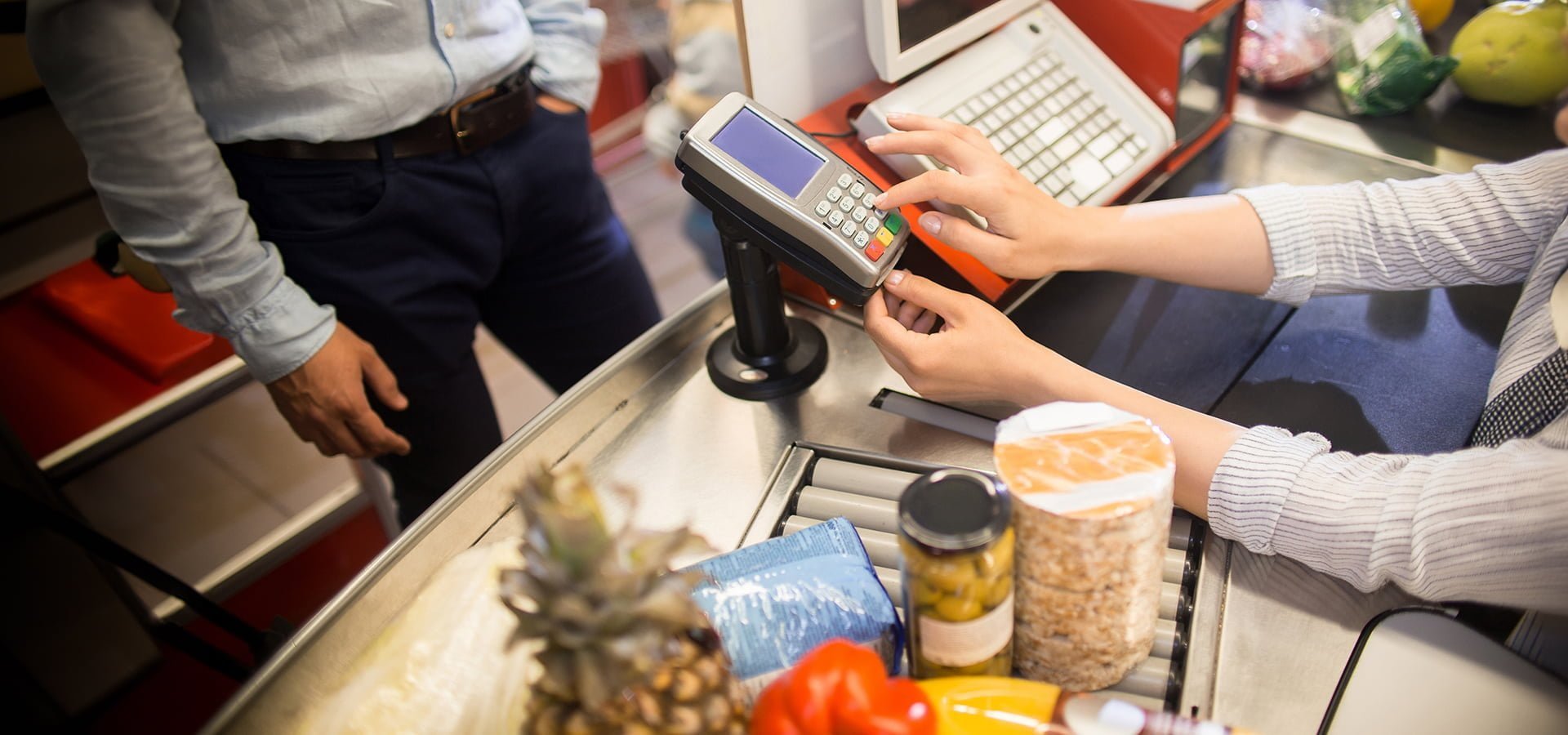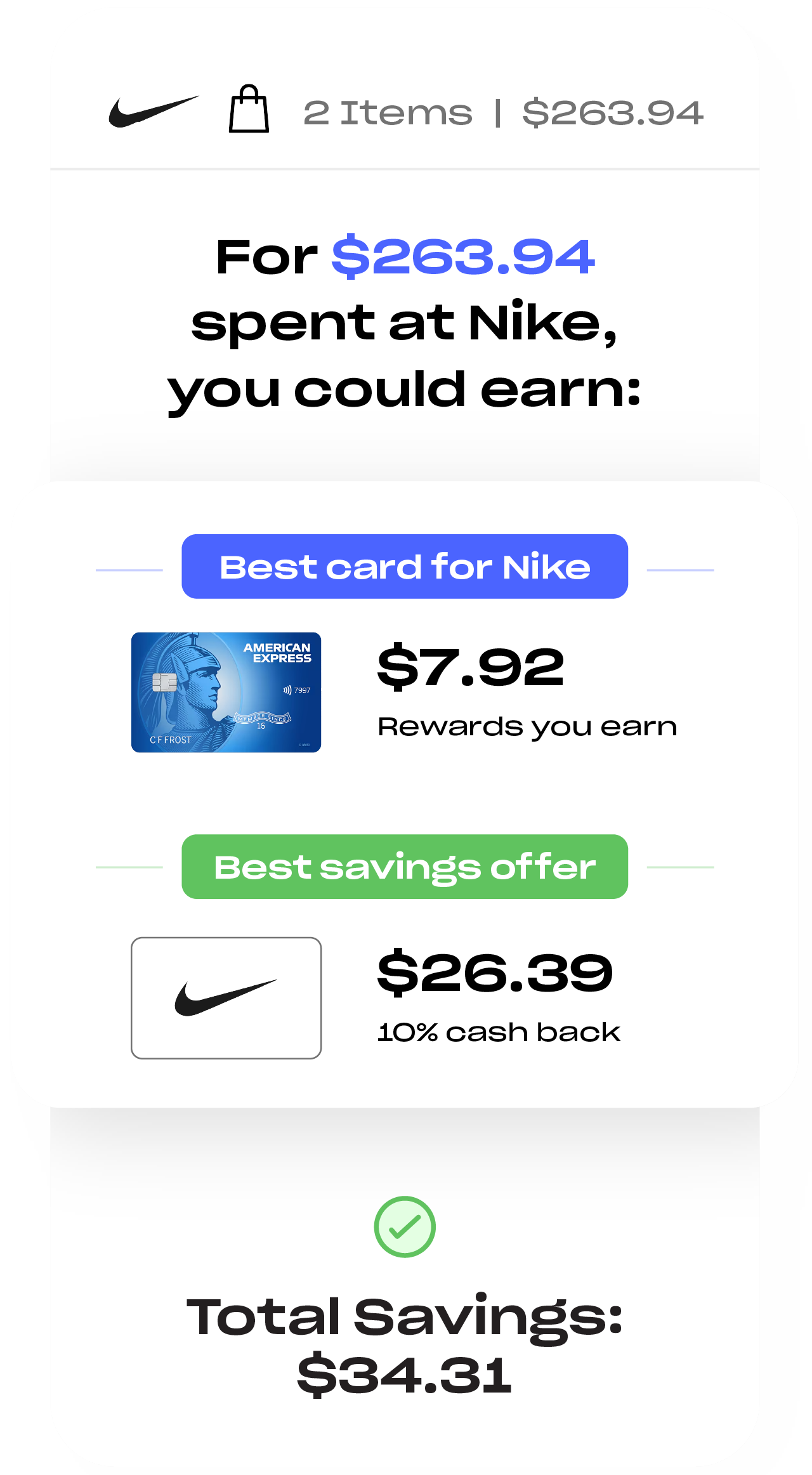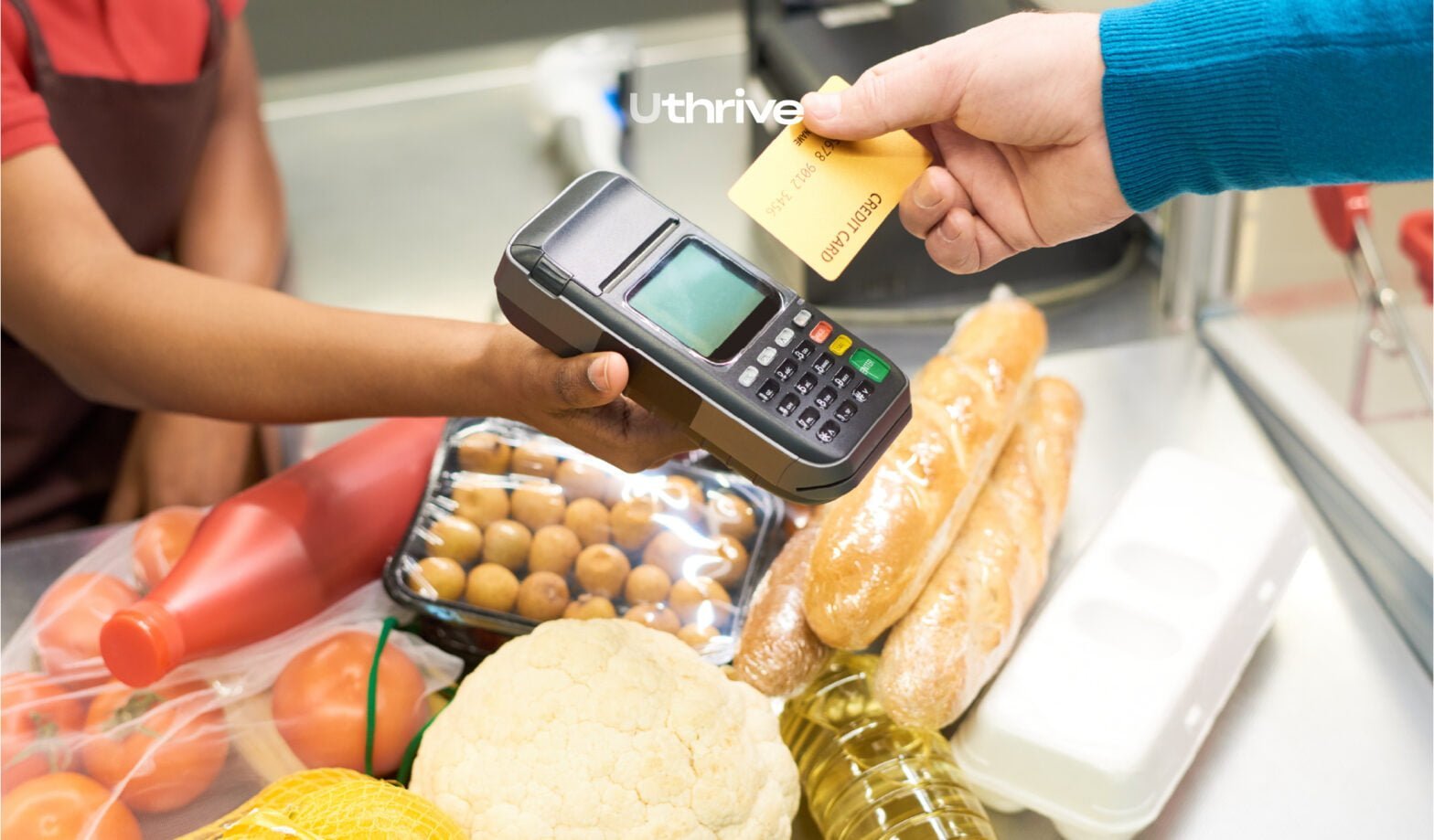Key Takeaways:
-
Discover how to save on grocery bills with credit cards strategically, earn cash back or travel rewards, and transform routine shopping into a rewarding financial strategy.
-
Explore meticulously curated credit card options tailored for grocery rewards, including card_name, Costco Anywhere Visa® Card by Citi, and card_name, each offering unique benefits.
-
Some practical tips can easily help maximize your credit card rewards with the best credit card for grocery shopping.
Unlock substantial savings on your family’s hefty grocery bills by utilizing credit cards designed for elevated rewards at U.S. supermarkets.
Whether you prefer cash back to support your household budget or seek travel rewards for future getaways, stocking up on groceries can now be a rewarding endeavor!
From fresh produce to pantry staples, the best credit cards not only reward your grocery hauls with generous cashback but also offer additional perks, making every swipe worthwhile for your wallet.
impressive rewards rates transform routine grocery shopping into a rewarding financial strategy!
What is a Grocery Credit Card?
A grocery credit card is a type of rewards credit card designed to offer enhanced benefits and cashback specifically for purchases made at grocery stores.
These cards typically provide higher reward rates or bonus points for spending on groceries, allowing cardholders to earn substantial discounts or cash back on their grocery bills.
Examples include the Blue Cash Preferred® Card from American Express, offering up to 6% cash back at U.S. supermarkets, and the Chase Freedom Flex℠, featuring 5% back on grocery purchases during rotating bonus categories.
Choosing the right grocery credit card can significantly boost savings on routine household expenses.
How do Grocery Credit Card Rewards work?
Grocery rewards credit cards work by offering users bonus incentives for their grocery purchases. These cards typically provide a higher reward rate for purchases made at supermarkets or grocery stores.
For example, Capital One SavorOne Cash Rewards Credit Card offers a notable 3% cashback percentage specifically for shopping at grocery stores.
The accumulated rewards can be redeemed for various benefits, such as cashback, travel perks, and more.
For a family spending over $500 weekly on groceries, this no fee credit card can yield about $200 in annual savings.
The best credit cards for groceries extend their benefits beyond just supermarket expenses, offering valuable rewards across major spending categories such as gas, streaming, commuting etc. and enhancing their appeal for everyday spending.
The Blue Cash Preferred® Card from American Express offers 6% cash back on up to $6,000 in U.S. supermarket purchases, followed by 6% back on select U.S. streaming subscriptions and 3% back at U.S. gas stations and on transit, all without a cap.
Best Credit Cards for Groceries
Finding the best credit cards for groceries aids in maximizing savings while shopping for everyday essentials.
Whether you have excellent credit or are looking for grocery store credit cards for bad credit (like the Capital One Secured Credit Card), there are options tailored to your needs.
These grocery credit cards provide a financial boost with every purchase! You can earn significant cash back at grocery stores with a credit card while also enjoying various other perks.
Let’s discover the best card for groceries involves understanding their cashback structures, associated benefits, and how they align with your spending habits.
-
Citi Custom Cash® Card - Best for Walmart Groceries
The Citi Custom Cash® Card stands out as an excellent choice for those who frequently shop from Walmart for their grocery needs.
With generous 5% cashback rewards on your top eligible spend category each billing cycle (up to the first $500 spent), this card ensures substantial savings on everyday grocery purchases.
It focuses on providing tailored benefits, where it automatically gets customized 5% cashback to your most spent category, making it an optimal credit card for grocery expenses.
Beyond its grocery perks, the card boasts a intro_apr_rate,intro_apr_duration, then reg_apr,reg_apr_type and a welcome bonus of bonus_miles_full, enhancing its overall value for savvy consumers.
-
Costco Anywhere Visa® Card by Citi - Best for Costco Members
Tailored for Costco enthusiasts, the Costco Anywhere Visa® Card by Citi by Citi reigns supreme as the go-to credit card for groceries.
Its unique rewards structure ensures significant savings, especially for those who often visit Costco for their grocery and household needs.
With 4% cash back on gas and EV charging (or the first $7,000 per year), the card boasts 3% back on restaurants & travel and 2% on all Costco purchases.
It also comes with no foreign transaction fees and is a versatile choice for Costco members seeking value across various spending categories.
-
card_name - Best for Whole Foods and Amazon
The card_name emerges as a top contender for grocery shopping, particularly at Whole Foods and Amazon.
As an exclusive benefit for Prime members, this card offers a compelling $100 Amazon Gift Card and unlimited 5% cashback at Amazon.com, Amazon Fresh, and Whole Foods Market.
Cardholders also get 5% on travel purchased through Chase and an unlimited 2% back at gas stations, restaurants, and on local transit with this no annual fee credit card for groceries.
It caters to the modern shopper’s diverse needs coupled with no foreign transaction fees, making it a standout choice for online grocery shopping.
-
Target RedCard™ Credit Card - Best for Target Groceries
Target enthusiasts looking to maximize their savings on groceries should look no further than the Target RedCard™ Credit Card.
Geared towards providing exclusive benefits within the Target ecosystem, this card offers substantial 5% discounts at Target and Target.com, including grocery purchases.
You also get 2% on dining and gas purchases. Its unique perks, including early access to promotions and an extended return window, enhance the overall shopping experience.
With a focus on convenience and savings, the Target RedCard™ Credit Card is the best credit card for groceries and household essentials at Target.
-
card_name - Best for Saving Money Wherever You Shop for Groceries
The card_name is an excellent option for grocery rewards, making it an optimal choice for those who value flexibility in their shopping destinations. This card stands out for its versatility, offering an attractive 3% cash back at U.S. supermarkets regardless of the store (on up to $6,000 per year).
Beyond groceries, it extends its benefits to 3% back on U.S. Online Retail purchases and U.S. gas stations (on up to $6,000 for each category per year), ensuring consistent savings.
With a user-friendly rewards program, no annual fee, a welcome bonus of bonus_miles_full, and additional perks, it’s among the top gas rewards credit cards. Terms Apply*.
-
Chase Freedom Flex℠ - Flexible Rewards for Grocery Shopping
The Chase Freedom Flex® earns its place among the best credit cards for groceries and gas with its flexible and rewarding approach.
With quarterly rotating bonus categories, it often includes groceries stores (excluding Target® and Walmart®) & gas, allowing cardholders to capitalize on elevated 5% cashback (on up to $1,500 in total combined purchases each quarter).
You can also earn 5% on travel purchased through Chase Ultimate Rewards and 3% on restaurant and drugstore purchases.
The flexibility to earn rewards in various spending areas, with a valuable welcome bonus and several perks, makes this no annual fee grocery card a dynamic choice for those who appreciate diversity in their rewards.
-
card_name - Best for Cash Back on Grocery Purchases
The card_name secures its position as the best credit card for cash back on groceries. Boasting industry-leading 6% cashback at U.S. supermarkets (on up to $6,000 per year, it offers substantial savings for households on grocery expenses.
The card’s enhanced rewards extend to other categories, including 6% on select streaming services and 3% back on transit and gas, enhancing its overall value.
With a annual_fees, the robust cashback potential and welcome bonus of bonus_miles_full Make it an attractive proposition for those prioritizing substantial savings on their grocery bills. Terms Apply*.
-
Capital One SavorOne Cash Rewards Credit Card - Best No Annual Fee Grocery Credit Card
The card_name is recognized as the best credit card for grocery shopping with no annual fee, making it an accessible choice for budget-conscious consumers.
With 3% cashback on groceries ( excluding Walmart® and Target®), dining, entertainment, and popular streaming services, it caters to those seeking significant savings without the burden of an annual fee.
It also provides 5% back on hotels & rental cars booked through Capital One Travel and valuable perks & protections like a 8% cashback on Capital One Entertainment purchases.
The card’s simplicity, with a straightforward rewards structure, the welcome offer of bonus_miles_full, and no foreign transaction fees, positions it as an excellent option for individuals to maximize cashback on their grocery purchases while avoiding annual fees.
How to buy groceries online with your credit card?
In today’s digital era, purchasing groceries online with your credit card is a seamless process that combines convenience with potential rewards. Follow these steps for a smooth online grocery shopping experience:
-
Choose the Right Card
Opt for a credit card that offers rewards or cash back for online purchases or groceries. Examples include the card_name or the card_name.
-
Select an Online Grocery Platform
Pick a reliable online grocery store like Instacart, Amazon Fresh, or Walmart Grocery.
-
Add Items to your Cart
Browse through the virtual aisles on the website or app, select the items you need, and add them to your online cart.
-
Checkout and Pay
Then, enter your credit card details during the checkout process, ensuring a secure transaction.
-
Earn Easy Grocery Rewards
Depending on your card, earn points, miles, or cash back for your grocery purchases online.
By leveraging the best credit card for groceries, you not only enjoy the ease of online grocery shopping but also maximize benefits through rewards or cash back, enhancing your overall experience.
How to choose a credit card for groceries?

Picking the right credit card for groceries can significantly boost your rewards and savings. With numerous options available, it’s crucial to consider your shopping habits, preferred stores, and the rewards structure that best compliments your lifestyle.
-
 Rewards Structure
Rewards StructureLook for credit cards offering elevated cash back or points specifically for grocery purchases. Some cards provide higher percentages or bonus categories for supermarket spending.
-
 Annual Fees
Annual FeesConsider cards with no or low annual fees to maximize your net gains. Evaluate whether the benefits outweigh the costs, especially if you’re a moderate spender.
-
 Spending Habits
Spending HabitsAssess the type of rewards that align with your financial goals, considering points, cash back, or specific hotel loyalty points. Find where you shop the most; a general-purpose credit card suits diverse grocery stores, while co-branded or flat-rate rewards cards may be better for specific retailers.
-
 Additional Benefits
Additional BenefitsExplore extra perks such as extended warranties, purchase protection, or even travel benefits if they align with your lifestyle and needs.
-
 Redemption Flexibility
Redemption FlexibilityOpt for grocery credit cards with versatile redemption options for greater value. Whether it’s cash back, travel rewards, or statement credits, having flexibility enhances the utility of your rewards.
-
 Merchant Acceptance
Merchant AcceptanceEnsure the card is widely accepted at your preferred grocery stores. Check whether your primary supermarkets fall under the card’s recognized merchant categories for optimal rewards.
-
 Introductory Offers
Introductory OffersSome cards provide welcome bonuses or introductory 0% APR periods. Leverage these offers to maximize initial benefits while considering the long-term value of the card.
-
 Credit Score Requirements
Credit Score RequirementsDifferent cards have varying credit score requirements, so you must check your credit score and choose a card that aligns with your current credit profile to increase approval chances. Ensure your credit score is good or excellent for eligibility with the best grocery rewards credit card.
Pros and cons of grocery credit cards
Navigating the realm of grocery credit cards involves weighing the advantages and drawbacks to determine if they align with your spending habits.
Pros
-
Cost-Saving Features: You get to earn rewards on grocery purchases to offset inflation costs, providing a practical means of saving on everyday expenses.
-
Elevated Rewards: With the best credit card for groceries, you can earn higher cash back or points on your grocery purchases.
-
Additional Benefits: Some cards even offer perks like generous sign-up bonuses, extended warranty, and purchase protections.
-
Intro APR Offer: Enjoy an introductory APR offer on some gas credit cards, allowing interest-free payments on purchases and balance transfers for a specified period, typically 12 to 15 months.
-
Versatile Rewards: Many credit cards rewarding grocery spending also extend rewards to other common expenses like gas, travel, and dining out, enhancing the overall experience.
Cons
-
Annual Fees: Certain cards with high grocery rewards may come with annual fees.
-
Complexity: Managing multiple categories, spending caps, or juggling multiple cards may be overwhelming for some users.
Does buying groceries with a credit card build credit?
Yes, buying groceries with a credit card can positively impact your credit score if you manage your card responsibly. Regular, on-time payments and maintaining a low credit utilization rate contribute to a healthy credit history.
For example, consistently using your credit card for grocery shopping and paying the balance in full each month demonstrates responsible credit behavior. On the contrary, carrying a high balance or missing payments can harm your credit.
Over time, this responsible credit usage can improve your credit score, making it easier to qualify for favorable loan terms and other financial opportunities.
Should I use my credit card for groceries?

Certainly, leveraging a credit card for groceries can be a smart financial move if done responsibly. By doing so, you can earn rewards, cash back, or other benefits offered by your credit card issuer.
The key is selecting the right card for extended perks, bonuses, or rewards—specially tailored for supermarket expenses. The best grocery credit cards in this article stand out for delivering significant grocery savings.
For example, if you have a credit card that provides 2% cash back on grocery purchases and you spend $500 per month on groceries, you could earn $120 in cash back over the year.
However, it’s crucial to pay your credit card balance in full each month to avoid interest charges. Otherwise, interest fees could outweigh any rewards earned, leading to unnecessary debt.
How can you maximize rewards with a grocery credit card?
Unlocking maximum rewards with a grocery credit card involves strategic choices tailored to your shopping habits. Here are some valuable insights to boost your reward-earning potential:
-
 Explore Co-Branded Store Cards
Explore Co-Branded Store CardsConsider renowned grocery stores like Walmart and Market Basket, focusing on providing competitive base prices and lucrative rewards.
Stores like Amazon, Target, and wholesale clubs, such as Sam’s Club provide store-specific cards with benefits and rewards, amplifying savings for budget-conscious shoppers.
-
 Leverage Cash Back Apps
Leverage Cash Back AppsAmplify your savings by using the best cashback apps like Ibotta, especially effective when paired with a grocery rewards card.
We recommend Ibotta for superior grocery-related offers compared to other apps and browser extensions.
-
 Combine Multiple Grocery Cards
Combine Multiple Grocery CardsMake the most of your gas rewards credit cards across diverse stores by stacking multiple grocery cards. Typically, grocery bonus categories may exclude superstores, wholesale clubs, and online providers.
Mitigate this by utilizing flat-rate cashback grocery cards for broader grocery coverage. Opt for Bank of America Customized Cash, Amex Blue Cash Everyday, or Citi Custom Cash, catering to wholesale clubs, drugstores, and online grocery purchases, offering versatility in your rewards strategy.
-
 Maintain a Monthly Balance of Zero
Maintain a Monthly Balance of ZeroClear your credit card balance monthly to maximize the value of grocery rewards. Avoid carrying a balance as interest charges can overshadow rewards, particularly considering the average annual percentage rate for all cards in the U.S. ranges from 15.56% to 22.87%.
Are grocery credit cards worth it?
Grocery credit cards can be immensely worthwhile, offering substantial benefits for regular shoppers. These cards typically provide cash back, points, or other rewards tailored to grocery purchases, helping you save money and earn valuable perks.
The rewards often extend beyond groceries, encompassing related categories like dining and gas. For individuals with consistent grocery expenses, these cards offer a practical way to earn back a percentage of their spending.
However, it’s crucial to choose a card that best suits your spending habits. Also, pay off balances promptly to maximize benefits without incurring interest charges to manage credit responsibly.
Conclusion
As per reports, the average U.S. household spent $5,703 on ‘food at home’ in 2023. Picture earning over $171 in credit card grocery rewards simply by using a no annual fee card like Blue Cash Everyday® Card from American Express, offering 3% cashback on groceries. This way, you can save big at the checkout even on top of coupon clipping.
Given that grocery shopping is an integral part of daily life and expenditure, it’s prudent to seek benefits beyond mere discounts on peanut butter and broccoli.
FAQs
Which credit card is best for grocery shopping?
The best credit card for grocery shopping depends on your spending habits and preferences. Cards like the card_name; and the Chase Freedom Flex® often offer competitive rewards for grocery purchases.
What is the best credit card for gas and groceries?
The card_name is considered the best credit card for gas and groceries, offering amazing rewards on both gas and groceries. However, it’s essential to consider your overall spending patterns to determine the best fit.
What is the best grocery store card with no annual fee?
The Chase Freedom Flex® and the card_name credit cards are among the best grocery credit cards with no annual fees that provide rewards on grocery store purchases.
What counts as a grocery purchase on a credit card?
Grocery purchases typically include transactions at supermarkets, grocery stores, and sometimes superstores. However, specific merchant codes may vary by card, so it’s advisable to check the terms and conditions.
Does buying groceries with a credit card build credit?
Yes, making regular, on-time payments on your credit card, including those for groceries, contributes positively to your credit history and can help build a good credit score.
What grocery stores have their own credit cards?
Many grocery store chains offer their own credit cards, such as the Capital One Walmart Rewards Card, the Kroger Rewards World Mastercard, and the .
What’s the best way to use credit cards at grocery stores?
The best way is to choose a credit card that offers substantial rewards on grocery purchases, pay attention to any additional perks, and always pay your balance in full each month to avoid interest.
Which credit cards offer the best cash-back rewards on groceries?
Cards like the card_name, the Citi Custom Cash® Card, and the card_name are known for offering the best cashback rewards on groceries.
How can you earn rewards on groceries with credit cards?
To earn rewards on groceries, use credit cards that provide bonus cash back or points for grocery store purchases. Some cards offer higher reward percentages, while others have a flat-rate cash back on these transactions.
Is getting a credit card for groceries worth it?
Getting a credit card for groceries can be worth it if you frequently spend on groceries. Look for cards with competitive rewards rates and additional benefits, and consider your overall spending habits to determine if the card aligns with your financial goals.




![Guide to Houston Intercontinental Airport Lounges: Top Things to Know [2025]](https://www.uthrive.club/wp-content/uploads/2024/11/Guide-to-Houston-Intercontinental-Airport-Lounges-Top-Things-To-Know-2024-1024x600.jpg)
![Guide to Seattle Airport Lounges: Top Things to Know [2025]](https://www.uthrive.club/wp-content/uploads/2024/11/Guide-to-Seattle-Airport-Lounges-Top-Things-To-Know-2024-1024x599.jpg)
![Guide to LaGuardia Airport Lounges: Top Things to Know [2025]](https://www.uthrive.club/wp-content/uploads/2024/10/Guide-to-Laguardia-Airport-Lounges-Top-Things-To-Know-2024-1024x600.jpg)
![Guide to SFO Airport Lounges – Top Things to Know [2025]](https://www.uthrive.club/wp-content/uploads/2024/10/Guide-to-SFO-Airport-Lounges-Top-Things-To-Know-2024-1024x599.jpg)
![Guide to Boston Airport Lounges: Top Things to Know [2025]](https://www.uthrive.club/wp-content/uploads/2024/10/Guide-to-Bostan-Airport-Lounges-Top-Things-To-Know-2024-1024x600.jpg)

